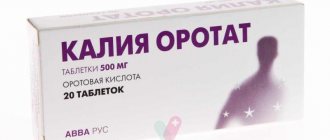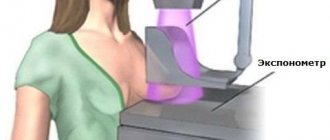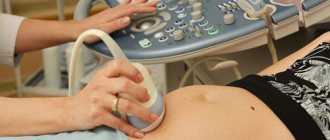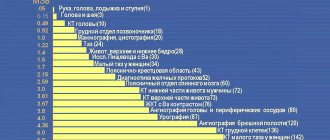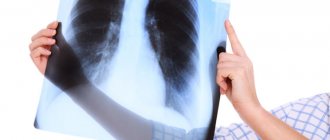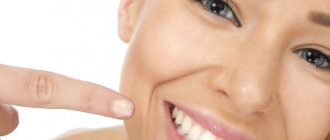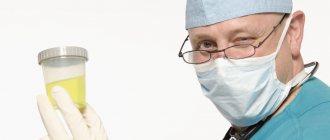During breastfeeding, medical indications sometimes arise for a woman to undergo fluorography. Naturally, a nursing mother is concerned about how the procedure may affect the baby’s health and future lactation.
- 2 Fluorography during breastfeeding: reasons for use, contraindications and side effects
2.1 Side effects
- 4.1 Video: X-ray exposure
- 6.1 Video: topic “X-ray” in the program “Dr. Komarovsky’s School”
What is fluorographic examination
Fluorography is a diagnostic method that involves photographing a visible image on a fluorescent screen, which is formed as a result of the passage of X-rays through the patient’s body. The procedure is painless and does not require special preparation. To prevent pulmonary diseases, doctors recommend undergoing a fluorographic examination once a year.
Fluorography - diagnosis of human organs using x-rays
As a rule, the procedure is prescribed for:
- suspected lung diseases (tuberculosis, pneumonia, sarcoidosis);
- detection of cancer;
- traumatic injury to the chest;
- heart diagnostics;
- chest pain, shortness of breath, severe and prolonged cough;
- finding a new job;
- future fatherhood.
Only a doctor can refer a nursing mother for fluorography.
Advice: choose an examination using a digital fluorograph (not used in all clinics), since, unlike film fluorography, the radiation dose per person is lower, and the result of the study is visible instantly.
Is it possible to refuse an examination: your rights
As we have already said, fluorography for nursing mothers is strongly recommended by orders of the Ministry of Health, and lactation, in principle, is not considered a contraindication to deferment. There is a reason for this. Nine months of pregnancy, childbirth weakens the mother’s body, and the immune system weakens.
There is a risk of becoming infected yourself and transmitting the harmful microorganism to your child and other people. In this case, breastfeeding will have to be stopped in any case. For prevention, fluorography is prescribed to be calm about the state of health.
The legislation recommends doing FOG; no punitive measures are provided for refusal to do the research. But be prepared for the fact that you will not be admitted to a children's hospital (if such a need arises). Clinics will also urgently require examination results.
To officially refuse FOG, you must write a written refusal in two copies explaining the reason, indicating that you have been warned about the consequences, and have it endorsed by the head physician of the clinic. If doctors, under the pretext that you did not have a fluorography, refuse to see you, then you have the right to contact the prosecutor's office.
Fluorography during breastfeeding: reasons for use, contraindications and side effects
A fluorographic examination of a nursing woman is prescribed for:
- identifying symptoms of tuberculosis;
- contact with a tuberculosis patient;
- unfavorable environmental conditions in the region of residence;
- hospitalization.
Contraindications to the procedure:
- inability to stay in an upright position;
- severe form of respiratory failure.
Side effects
During the study, low doses of x-ray radiation are used, which do not cause side effects. The rays affect the body for only a few seconds while the device is working.
Doctors say that the amount of radiation in the study is insignificant, so the benefits of the procedure are greater than the harm.
However, you should not exceed the safe limit, since too high a radiation dose can lead to:
- changes in blood composition;
- decreased vision;
- malignant neoplasms;
- leukemia (decrease in the number of white blood cells);
- fragility of blood vessels.
Types of fluorography
When thinking about whether it is possible to do fluorography of a nursing mother, most women are afraid of the adverse effects of radiation on the body. Not everyone knows that there are two types of examination devices: film and digital. In the first case, the image is recorded directly on film, which makes it impossible to somehow adjust the level of the received radiation dose. Digital devices display information on the screen, have higher sensitivity and allow the use of doses 4-5 times lower. If technically possible, nursing mothers should choose the latter option.
Alternative method
An alternative to fluorography is x-ray. This diagnostic method is more informative, since the image of the organ is taken in full size. In addition, X-rays are used to monitor the dynamics of the pathological process.
X-ray is a safe method for diagnosing serious diseases, but it is not performed without a doctor’s prescription.
Stage of preparation for fluorography and x-rays
The method of obtaining information about the state of internal organs using x-rays during lactation involves receiving a minimum dose of radiation. Its effect on the body as a whole is minimal, and most likely on milk as well. And the benefits of such an examination are invaluable, since the doctor has the opportunity to look inside the human body without a single hole or incision.
If concerns about maintaining lactation still remain, you should adhere to the recommendations given by leading gynecologists and pediatricians led by E.O. Komarovsky:
- Try to expose your body to x-ray radiation only when it is really necessary. That is, x-rays and breastfeeding can coexist only in extreme cases, when it is necessary to confirm or refute a particular disease. As for the annual mandatory examination, it is worth rescheduling the procedure until the child switches to adult food or formula
- If you cannot avoid radiation, try to feed the baby before the x-ray and, if possible, express milk for at least 1-2 upcoming feedings. Some women get rid of milk produced after and during radiation by expressing it and then disposing of it
- You have the right to ask the radiologist for a special protective apron, which is placed on the body for additional protection. By the way, pregnant women use this same device to protect their child from the harmful effects of X-rays.
Safety regulations
To reduce the minimum amount of negative exposure to X-rays, you should:
- undergo diagnostics only according to a doctor’s indications;
- after the procedure, drink a glass of milk;
- instead of fluorographic examination, choose radiography.
However, experts believe that the radiation dose is so small that no additional procedures are needed.
Video: X-ray exposure
Photo interpretation
To diagnose pathologies, a specialist deciphers the film, which shows:
- focal shadows - darkening up to 10 mm, indicating pneumonia or tuberculosis;
- compacted, enlarged roots with general normal health indicate chronic inflammation, bronchitis;
- stringy roots are visible in smokers and in acute bronchitis;
- calcifications indicate contact with a patient with tuberculosis, but immunity was sufficient to preserve the Koch bacillus in a shell of calcium salts;
- fibrous tissue appears as a result of injuries, pulmonary diseases, surgical interventions;
- changes in the diaphragm occur due to obesity, gastrointestinal diseases, pleurisy;
- pleuroapical layers accumulate after tuberculosis;
- an increase in the vascular pattern will indicate bronchitis, heart problems, pneumonia, and the initial stages of cancer;
- sinuses (cavities between the pleural folds) in healthy lungs are free, but sealed ones require treatment;
- displacement and expansion of the mediastinum - the space between the lungs and other organs of the chest - are detected;
- adhesions and layers do not require treatment; they indicate previous inflammation.
The effect of x-rays on lactation and the child’s body
Doctors believe that the safe dose of radiation for human health is no more than 1 mSv per year. With the digital research method, it is 0.05 mSv, which corresponds to a stay in natural conditions for 2–4 months. This means that performing fluorography 2 times a year is safe for health.
Contrary to popular belief, X-rays do not have a harmful effect on lactation, the health of the baby or the quality of breast milk. There is no need to express or wait several hours after the procedure. It is allowed to feed the baby immediately after fluorography.
Modern medicine has accumulated sufficient practical experience in the use of x-ray diagnostics and fluorography for examinations. Fluorography during lactation is completely safe. It does not affect the composition and quality of breast milk. The procedure affects only the mother’s body.
Yulia Sokolova - doctor, candidate of medical sciences, employee of the perinatal center
https://deti.mail.ru/baby/newborn/flyuorografiya-pri-grudnom-vskarmlivanii/
When can I feed my baby after the examination?
Perhaps this is the question that concerns every woman who, for one reason or another, had to take a photo of her lungs. Is it possible to feed a child after fluorography or not? Considering that irradiation during the procedure does not have a negative effect on the quality of milk, you can breastfeed your baby immediately after the examination.
It makes no sense to offer your baby expressed milk, nor does skipping a feeding. Even a single use of a bottle can lead to breast abandonment and subsequent transition to artificial feeding. This is especially dangerous during the neonatal period, when lactation is just establishing and any interference in the process can be fatal. You should not conduct such experiments at the age of three or four months, when many babies go through the stage of false breast-refusal. The appearance of a bottle with expressed milk can only worsen the situation, leading to an unreasonable cessation of breastfeeding.
Opinion of Dr. Komarovsky and other specialists
Well-known pediatrician E. Komarovsky believes that interrupting breastfeeding after a fluorographic examination is inappropriate. He claims that X-ray radiation does not penetrate milk, so you can feed the baby immediately after the procedure.
Experts from the international organization La Leche League N. Mokhbacher and J. Stock indicate that fluorography is absolutely safe during breastfeeding, since X-rays do not penetrate milk.
Video: topic “X-ray” in the program “School of Doctor Komarovsky”
If a nursing mother needs to have a computed tomography or magnetic resonance imaging scan with contrast, then she must wait from 1 to 6 hours until the substance is completely eliminated from the body.
What types of x-rays are performed for nursing mothers?
Currently, there are two types of x-ray examinations, differing in the degree of harm they cause to the female body.
X-ray image using a digital matrix
This system is used on old-style X-ray machines. The technology of the process is as follows: first, the picture appears on the screen, then it is transferred to a special film, and only after that a photograph is obtained. The radiation in this case is much higher than the dose given by modern equipment.
X-ray using beam-shaped radiation (cells)
The latest technology, which appeared in the former CIS relatively recently, produces a dot image in the form of a beam. This allows us to minimize the harmful effects of x-rays on a nursing mother. It is worth saying that this particular option is ideal for women who are breastfeeding.
Dental examination during lactation
A woman breastfeeding a child is prescribed a dental examination:
- to diagnose the causes of pain and curvature;
- to track the location of seals;
- to detect inflammatory processes, cysts, soft tissue diseases;
- to confirm the possibility of saving the tooth;
- to detect caries.
Doctors are confident that dental X-ray examination can be done without fear during lactation, since it does not affect breast milk in any way.
But still, in order to avoid negative effects, the procedure must be performed exclusively using digital technology with radiation exposure reduced to a minimum.
Prejudices and superstitions
So is it possible to do fluorography for breastfeeding women? Is it possible for breastfeeding women to walk on sunny days? Very much so. If so, then nothing bad will happen from the tuberculosis detection procedure.
There are many rumors about X-rays only because not all people are ready for basic innovations. Of course, people have been familiar with X-rays for more than a century, but they burst into life for medical purposes not so long ago. And, as with any other thing that is associated with the word “radiation,” there is an incredible amount of gossip swirling here. “It’s harmful, it’s harmful,” everyone who doesn’t have any scientific information in this area is ready to say.
Regarding pregnant and lactating women, this all also takes on the character of prejudices and superstitions. After all, it will not be a lie that a woman with a child - born or not - is limited in many actions, because “this is not accepted”, “a bad omen”.
Well, regarding the lung scan, all this can be discarded. X-rays will not have any active negative effect on milk, the composition will remain the same, the condition of the little man will remain excellent. You just need to believe that modern medicine is able to discard any “harmful” and “not worth it”!
Fluorography room
Symptoms for which fluorography should be done even for a nursing mother
Symptoms of tuberculosis are:
- Temperature increase. If your body temperature rises sharply, and this happens for a long time, without signs of a cold, this is a sign. There are many viruses that lead to a prolonged “unreasonable” increase in temperature, and among them tuberculosis is one of the worst.
- Fatigue, weakness. Waking up accompanied by a feeling of fatigue, reluctance to do anything? This should not be attributed to ordinary laziness, the consequences of postpartum depression. Such lethargy can be caused by a variety of diseases, including tuberculosis.
- Increased body sweating. It usually appears at night or when asleep. Having dozed off, you want to immediately ventilate the room? Even your favorite air conditioner can't save you? This is a wake-up call that you should get tested for this terrible disease without delay.
- Decreased appetite. Continuing the conversation about lethargy, often patients with tuberculosis begin to lose weight and eat less. It may not be the magical properties of the postpartum diet. During breastfeeding, it is necessary to eat well and densely, and if you do not want to do this, you should consult a specialist doctor for recommendations.
- Coughing. It can be both dry and wet. Wet is usually accompanied by sputum, which may even contain blood. Cough is a sign of many diseases, including the simplest cold. If tablets and syrups do not help, you need to take action. Every attentive mother should consult a doctor when a cough appears, at least to avoid infecting the child.
If any of the listed symptoms are detected, it is not recommended to refuse fluorography. Identifying tuberculosis at an early stage will be much easier than treating an advanced case later. It is necessary to be vigilant for the sake of your own health and the well-being of the child.
During the first months of a little person’s life, it is important to be on a short line with doctors, constantly consult and report changes in well-being. When breastfeeding, a woman is responsible for two lives, and this must be taken extremely seriously.
Health to all children and their wonderful mothers!
